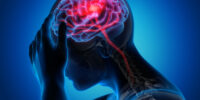What Are Antispasmodic Medications And How Do They Relieve Muscle Spasms?

Muscle spasms are involuntary contractions of skeletal muscles that can cause pain, discomfort, and limitations in movement.
Antispasmodic medications are commonly prescribed to alleviate these symptoms and provide relief.
This article aims to explore the mechanism of action of antispasmodic medications, the different types available, their common side effects, and their effectiveness in treating muscle spasms.
Additionally, precautions and considerations when using these medications will be discussed, as well as alternative treatments for muscle spasms.
The objective of this article is to provide a comprehensive understanding of antispasmodic medications and their role in managing muscle spasms.
By adopting an academic style of writing that is objective and impersonal, this article aims to present evidence-based information to support the readers in making informed decisions regarding the use of antispasmodic medications.
Key Takeaways
- Antispasmodic medications are a type of medication that can relieve muscle spasms.
- These medications work by relaxing the muscles and reducing muscle contractions.
- Antispasmodic medications can be an effective treatment option for managing muscle spasms.
- It is important to consult with a healthcare professional before starting any new medication.
Understanding Muscle Spasms
Muscle spasms, also known as involuntary muscle contractions, are a common occurrence that can range from mild discomfort to debilitating pain. These spasms can affect any muscle in the body and can be caused by a variety of factors, including muscle fatigue, dehydration, electrolyte imbalances, nerve damage, and certain medical conditions such as multiple sclerosis or Parkinson’s disease.
Prevention of muscle spasms involves maintaining proper hydration, ensuring adequate intake of electrolytes such as potassium and magnesium, and avoiding activities that may strain the muscles. Stretching exercises and regular physical activity can also help prevent muscle spasms by improving muscle flexibility and strength.
In some cases, however, muscle spasms may persist despite preventive measures, leading individuals to seek medical intervention in the form of antispasmodic medications.
How Antispasmodic Medications Work
Contraction-inhibiting drugs function by blocking the transmission of nerve impulses to the affected area, interrupting the signal pathway and ultimately preventing the involuntary tightening of muscles.
These antispasmodic medications work through various mechanisms of action to provide relief from muscle spasms. They can act on the central nervous system by targeting specific receptors, such as GABA receptors, to enhance inhibitory neurotransmission and reduce muscle excitability.
Additionally, antispasmodics can also directly affect the muscle fibers themselves, interfering with the release of calcium ions and inhibiting muscle contraction.
The dosage recommendations for antispasmodic medications vary depending on the specific drug and the severity of the muscle spasms. It is important to follow the prescribed dosage instructions provided by a healthcare professional to ensure safe and effective use of these medications.
Types of Antispasmodic Medications
There are several different types of drugs that are used to alleviate involuntary muscle tightening. Antispasmodic medications are one such type, and they work by targeting the underlying causes of muscle spasms.
These medications can be classified into two main categories: anticholinergics and calcium channel blockers. Anticholinergics, such as dicyclomine and hyoscyamine, block the action of acetylcholine, a neurotransmitter that plays a role in muscle contractions. Calcium channel blockers, including diltiazem and nifedipine, prevent calcium from entering muscle cells, thereby reducing muscle contractions.
The efficacy of antispasmodic medications varies depending on the individual and the specific medication used. Some individuals may experience significant relief from muscle spasms, while others may not respond as well.
Additionally, it is important to consider potential drug interactions when taking antispasmodic medications. These medications may interact with other drugs, such as certain antidepressants and antihistamines, leading to adverse effects or reduced effectiveness. Therefore, it is crucial to consult with a healthcare professional to ensure safe and appropriate use of antispasmodic medications.
Common Side Effects
Common side effects of antispasmodic drugs can cause discomfort and potentially impact daily activities. While antispasmodic medications are generally well-tolerated, some individuals may experience side effects. These side effects can vary depending on the specific medication and the individual’s response.
Table: Common Side Effects of Antispasmodic Medications
| Side Effect | Management |
|---|---|
| Dry mouth | Sipping water or using sugar-free candies |
| Blurred vision | Avoiding activities requiring clear vision |
| Drowsiness | Avoiding driving or operating heavy machinery |
| Constipation | Increasing fluid and fiber intake |
| Urinary retention | Emptying the bladder regularly and completely |
Management of side effects is crucial to ensure patient compliance and minimize discomfort. Additionally, it is important to consider the potential long-term effects of antispasmodic medications. While rare, some individuals may experience adverse effects such as cognitive impairment or dependency with prolonged use. Regular monitoring and consultation with healthcare professionals can help identify and address any potential issues.
Effectiveness in Treating Muscle Spasms
Effective treatment options for alleviating muscle spasms include various therapies and interventions that target the underlying causes and provide relief from the discomfort and limitations associated with this condition.
Antispasmodic medications are commonly prescribed to treat muscle spasms and have shown promising effectiveness in providing relief. These medications work by blocking the transmission of nerve impulses to the muscles, thereby reducing the frequency and intensity of spasms.
Studies have evaluated the effectiveness of antispasmodic medications in treating muscle spasms and have found positive outcomes in terms of reducing spasm frequency and improving patient satisfaction. However, it is important to note that the effectiveness of these medications may vary depending on the individual and the underlying cause of the muscle spasms.
Therefore, it is essential for healthcare professionals to evaluate the effectiveness of antispasmodic medications on a case-by-case basis to ensure optimal patient outcomes.
Precautions and Considerations
One important consideration in the treatment of muscle spasms is to carefully assess the potential side effects and interactions of the prescribed therapies and interventions.
Antispasmodic medications are commonly used to relieve muscle spasms, but they are not without precautions and contraindications. Patients should be cautious when taking antispasmodics if they have certain medical conditions, such as glaucoma, urinary retention, or gastrointestinal obstruction.
Additionally, antispasmodics may interact with other medications, such as opioids or benzodiazepines, leading to increased sedation and respiratory depression.
It is crucial for healthcare providers to review the patient’s medical history and current medication regimen to ensure the safe and appropriate use of antispasmodic medications. In some cases, alternative treatment options may be considered or dosage adjustments may be necessary to minimize the risk of adverse effects or drug interactions.
Alternative Treatments for Muscle Spasms
An alternative approach to treating muscle spasms involves exploring non-pharmacological interventions and therapeutic modalities.
Natural remedies and physical therapy are two such options that can provide relief from muscle spasms.
Natural remedies include applying heat or cold to the affected area, using essential oils such as lavender or peppermint oil, or taking herbal supplements like valerian root or chamomile. These remedies can help relax the muscles and reduce spasms.
Physical therapy, on the other hand, focuses on improving muscle strength and flexibility through exercises and stretches. This can help alleviate muscle spasms by reducing muscle imbalances and increasing blood flow to the affected area. Physical therapy also includes techniques such as massage, ultrasound, and electrical stimulation, which can provide further relief.
By incorporating these non-pharmacological interventions, individuals experiencing muscle spasms have additional options for managing their condition.
Conclusion: Finding Relief for Muscle Spasms
In conclusion, identifying and implementing non-pharmacological interventions and therapeutic modalities can provide individuals with muscle spasms a diverse range of options for finding relief.
While antispasmodic medications are commonly used to alleviate muscle spasms, alternative therapies and natural remedies can also be effective in managing this condition. Some alternative therapies include acupuncture, massage therapy, and chiropractic adjustments. These treatments aim to address the underlying causes of muscle spasms, such as muscle imbalances or nerve compression.
Additionally, natural remedies like hot or cold compresses, herbal supplements, and essential oils may provide temporary relief from muscle spasms. It is important to note that the effectiveness of these alternative treatments may vary from person to person, and it is advisable to consult with a healthcare professional before trying any new interventions.
Frequently Asked Questions
Are antispasmodic medications addictive?
Antispasmodic medications are not considered addictive. However, they may have side effects such as drowsiness and dry mouth. Alternative treatments for muscle spasms include physical therapy, stretching exercises, and hot or cold therapy.
Can antispasmodic medications be used to treat conditions other than muscle spasms?
Antispasmodic medications can be used to treat conditions other than muscle spasms. They have alternative uses in the treatment of gastrointestinal disorders and urinary conditions. However, their use may pose potential risks and side effects.
What is the recommended dosage for antispasmodic medications?
The recommended dosage for antispasmodic medications may vary depending on the specific medication and the condition being treated. It is important to consult with a healthcare professional for appropriate dosing instructions. Potential side effects and alternatives to antispasmodic medications should also be discussed.
Can antispasmodic medications be used by pregnant or breastfeeding women?
Antispasmodic medications may not be safe for pregnant or breastfeeding women. It is important for them to consult with their healthcare provider for alternative options to manage muscle spasms during this time.
Are there any long-term side effects associated with using antispasmodic medications?
Long-term safety of antispasmodic medications is still being evaluated. However, alternative treatments such as physical therapy, stretching exercises, and stress reduction techniques can also be considered for relieving muscle spasms.









